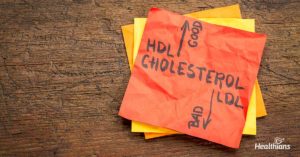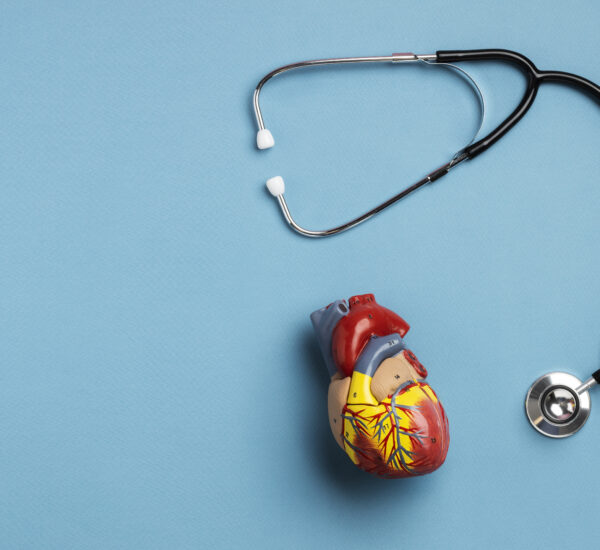Contributed by – Healthians Team
Chances are you have heard about cholesterol a lot through TV commercials. Most of the food and oil brands are advertising themselves as “cholesterol free” and “good for the heart” and without much of a thought, we fall for them. However, most of us do not have much information about what cholesterol is and what levels of it should be maintained. We have never thought about why these brands are using it to market themselves. There are a lot of questions related to cholesterol going around. To help you understand it better, here is a guide book to manage your cholesterol levels.

What is cholesterol?
Cholesterol is a waxy substance produced by our liver naturally. It is a type of lipid found in the blood and is necessary for building healthy cells, vitamin D and a certain type of hormones. Although it is a form of lipid just like fat, it cannot be burned for energy or exercised off or sweated out. As a consequence, cholesterol management is important as high levels of it in the body can trigger various health problems.
There are two types of cholesterol in the body:
- LDL (Low-Density Lipo-Protein) or the bad cholesterol– It transports cholesterol to the arteries. High level of LDL starts building up plaque in your arteries, causing them to narrow down. These blockages hinder the blood flow thereby increasing the risk of heart attack and stroke.
- HDL (High-Density Lipo-Protein) or the good cholesterol– It transports the cholesterol back to the liver where it is processed and excreted. The more HDL we have, the lesser the chance of developing heart diseases.
Causes of High Cholesterol
Physical inactivity or lack of exercise – Workout helps in increasing HDL which helps in removing LDL from the body. Also with physical activity density of LDL increases which makes it less harmful.
Obesity or being overweight – Being overweight increases your LDL and chances of developing heart diseases. Losing weight can help you improve your HDL level which decreases the risk of heart attack and stroke.
Poor dietary habits – Foods with high carbohydrates, Trans fat, saturated fat and cholesterol result in high cholesterol in the body. Foods like commercially baked cookies, microwave popcorn and full-fat dairy products should be replaced with plant-based sterols and foods with high fibre content.
Diabetes – High blood sugar contributes to increasing in LDL and it also damages arteries. Both these conditions can increase the risk of heart diseases.
Smoking – Cigarette smoke damages the walls of blood vessels making them vulnerable to fatty deposits. It can also lower the levels of HDL which makes the removal of LDL difficult.
Hereditary – High blood cholesterol runs in the family. Genes can, up to some level, decide the level of cholesterol in the blood. But this condition can be turned by maintaining a healthy lifestyle.
Some Facts about cholesterol
- People belonging to the age group of 30-69 are at a higher risk of developing high cholesterol.
- People with a family history of high cholesterol are more likely to inherit it.
- Men aged 45 years or more and women aged 55 or more are at higher risk of high cholesterol.
- Cholesterol can be hereditary as well with an incidence rate of 50%.
- High cholesterol is the most common cause of heart problems.
- 3/4thof the cholesterol in your body is produced in the liver.

Symptom checker
There are no specific symptoms for high cholesterol, thus regular cholesterol test after the age of 20 is absolutely necessary. This health check-up will help you in early identification of any risks and will assist you in planning a future course of action. With certain lifestyle modifications like a change in diet or maintaining a regular workout schedule and prescribed medications can help you treat high cholesterol. You can get a cholesterol test done online from here.
Consequences of untreated high cholesterol
If high cholesterol levels are not treated on time it can lead to various heart-related diseases. Some of them are:
- Coronary artery disease
- Heart attack
- Stroke
- High blood pressure
Understanding test reports
The test for high cholesterol is a panel of blood tests called lipid profile. It includes:
- Total cholesterol
- HDL (high-density lipoprotein) cholesterol
- LDL (low-density lipoprotein) cholesterol
- Triglycerides
The following table mentions the desirable, borderline and high values of cholesterol. You can refer to this table to analyze your own test reports and learn about your condition.
|
- LDL cholesterol is considered borderline high when between 130 and 159 mg/dL and high when above 160 mg/dL.
- HDL cholesterol level below 40 mg/dL is considered low.
*Reference range may vary from lab to lab.
Frequency of cholesterol test
It is suggested to get your cholesterol levels checked every 3 months.

Lifestyle recommendations
Cholesterol cannot be burned or sweated out like fat. It can only be excreted or levels can be maintained. Although medications can help in decreasing your cholesterol levels but lifestyle modifications can help you in maintaining these levels naturally. Below are a few points to guide you while adding changes in your lifestyle to decrease high cholesterol levels.
The TLC (Therapeutic Lifestyle Changes) diet is a low-saturated-fat, low-cholesterol eating plan that calls for less than 7% of calories from saturated fat and less than 200mg of dietary cholesterol per day. Following this diet lowers cholesterol and reduces the probability of heart attack and stroke.
As per the TLC plan, the dietary do’s to reduce cholesterol include:
Fats – Intake of fat should not go above 35% of total calories. Thus, saturated fats should be avoided. Butter, egg yolks, whole milk dairy products and lard are all saturated fats.
Trans fats – Trans fats too increases cholesterol levels. Fried foods, sweets and stick margarine should be avoided.
Good fats – 20% of calories come from monosaturated fats which help in reducing LDL and have no negative impact on HDL. Avocados, olive, almond oils and peanut butter are some of the sources.
Polysaturated fats – 10% of calories come from polysaturated fats. They reduced LDL but can also reduce HDL. Thus, the intake has to be moderated. Some sources are fatty fish, pumpkin, soybean and corn oils.
Dietary cholesterol – As per TLC diet, intake of dietary cholesterol should be limited to 200 milligrams per day. Switching animal products like red meat, shellfish and egg yolks with lean meat and reduced fat dairy products can help.
Protein – Proteins make up to 20% of daily required calories. They help in the growth and repair of damaged cells. But many sources of it are high in cholesterol and saturated fats. Some healthy sources of it can be lean meat, reduced fat dairy, beans, lentils, seeds and soy products.
Other lifestyle modifications to reduce cholesterol naturally include:
- Avoid smoking. As discussed above, quitting smoking can improve HDL which helps in getting rid of LDL. Apart from cholesterol, smoking can cause various other diseases.
- Follow a healthy diet plan with the correct menu. Diet plays an important role in our health. A healthy diet can keep us healthy and happy for a longer time.
- Engage in some regular workout regime like aerobics, cycling, brisk walking or even yoga asanas like kapalbharti or shalabhasana. It will help in reducing weight which in turn is related to lowering cholesterol.
- Get regular health checkups as high cholesterol shows no symptoms. Your test reports will reflect your condition and will give you enough time to take preventative measures.
- Manage your stress levels as stress can hinder your day-to-day life and can stop you from maintaining a healthy lifestyle.
With the help of this guidebook, you can manage cholesterol levels. A little modification in your lifestyle can lead you away from chances of heart diseases naturally. You can also refer your doctor to help you in lowering cholesterol levels.




